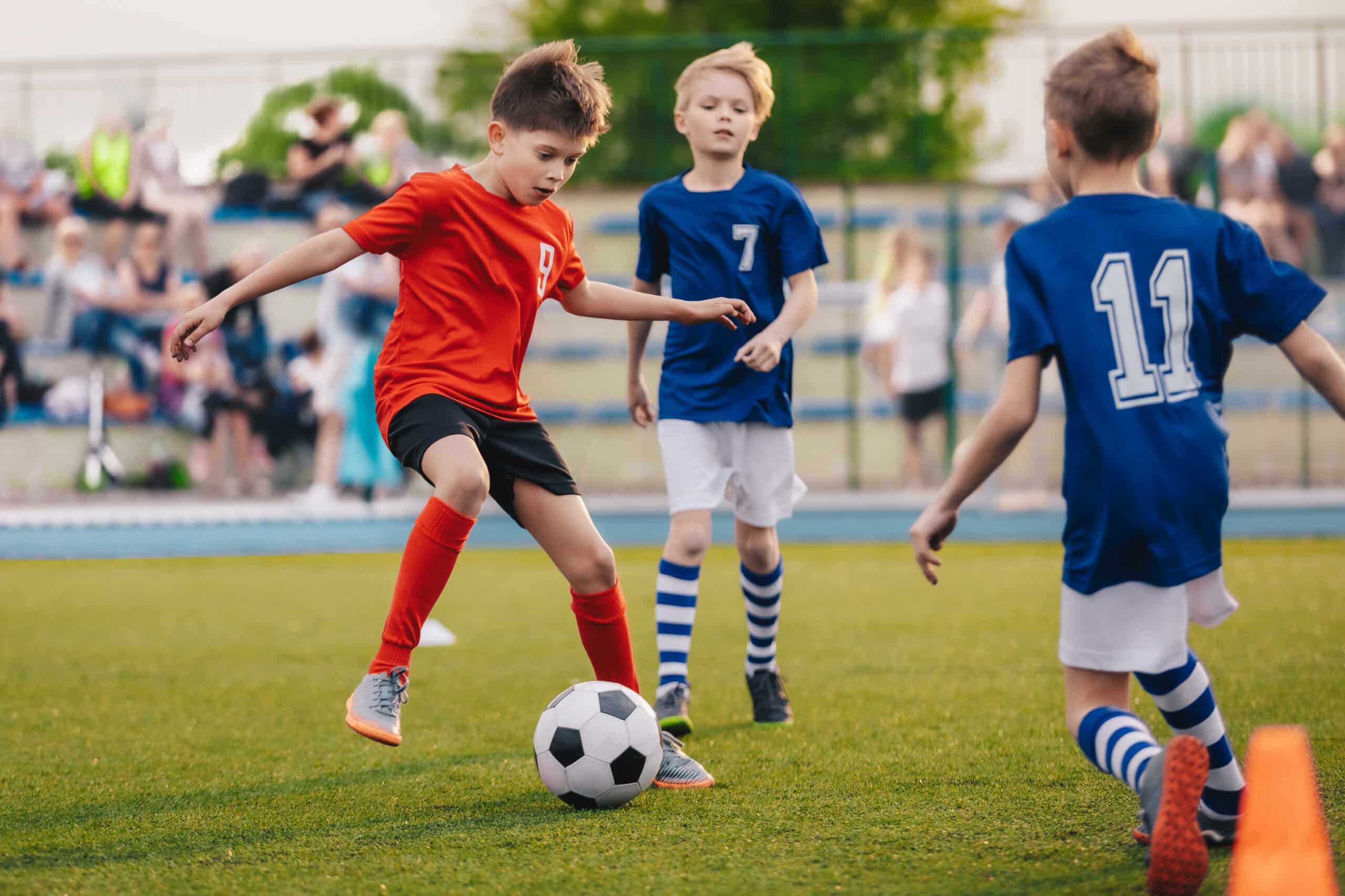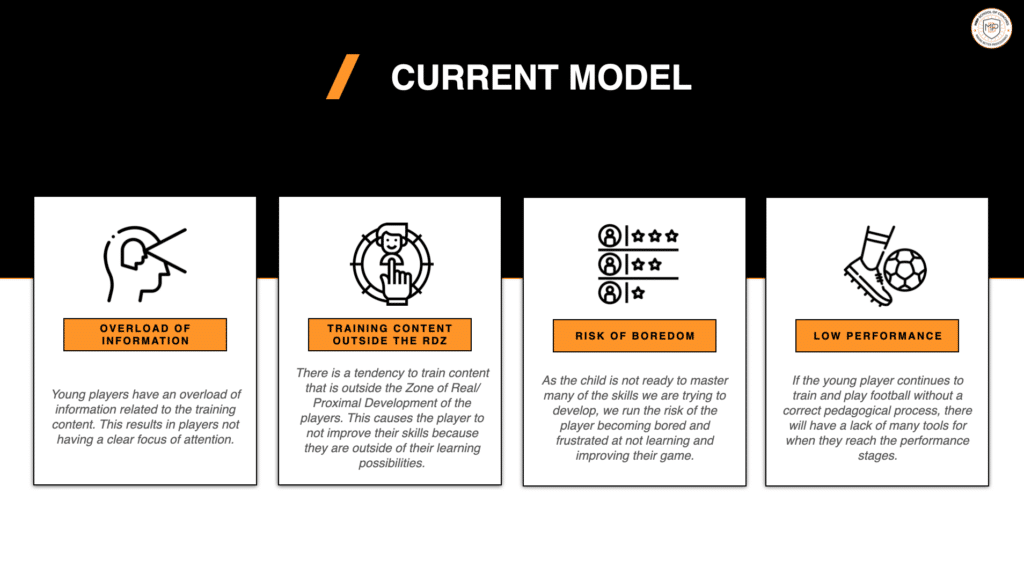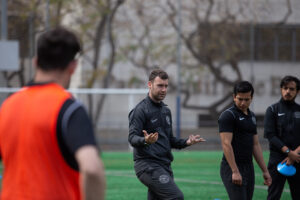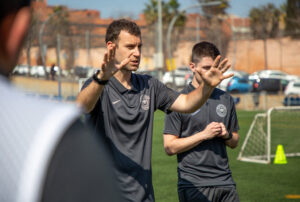The title of the article raises a crucial question in the sporting development of young players. When we look at how the format of the game in football progresses, it becomes apparent that children are often confronted with a style similar to that of adults, which can be too difficult and complex for their level of skill and understanding.
It is like putting big shoes on a small child – they do not fit properly and can be uncomfortable and ineffective. Similarly, expecting them to play and train in a format designed for adults may place undue demands on their still-developing physical and mental capacities.
Instead, we should consider adapting the game to the child, providing them with a training format that is tailored to ensure their proper growth and football development.
This involves adjusting various aspects of the game, such as the number of players per team, the space and duration of matches, to be more in line with the abilities and needs of young players.
Players in early periods of development, such as the Egocentric Stage, have limitations in their ability to perceive and process information during the game. Therefore, it makes little sense to expose them to large spaces, as they are not ready to handle such complexity on a cognitive level.
Instead, we must provide them with an environment that matches their level of understanding and allows them to participate in an active and meaningful way.
“In the teaching-learning process in football, when we analyse in depth the different contexts and current paradigms around the world, we observe that there are a series of deficiencies that do not allow us to obtain levels of excellence in its application”.
Adapting the game is not only about competition, but also about training. It is important that children have the opportunity to practice in an environment that encourages their participation and development.
By reducing the number of players and the size of the pitch, we can create a more conducive environment for young footballers to develop their technical and tactical skills more effectively.
Studies such as the one conducted by Fenoglio, who adapted the playing context from 8 vs 8 to 4 vs 4 for Manchester United academy players, have shown that these adaptations can significantly increase player participation and improve their understanding of the game.
Furthermore, reducing the size of the pitch and the number of players can favour the appearance of attacking actions and tactical decisions in the game, as indicated by research carried out by Prado and Nava (2007).
In summary, adapting the game to the child is essential to ensure their sporting development and enjoyment of football. By adjusting the format of the game and training to the needs and abilities of young footballers, we can facilitate their learning in a continuous and orderly manner, giving them the opportunity to grow and thrive in this beautiful game.
If you are interested in delving deeper into this fascinating subject and discovering how to implement effective strategies in adapting the game of football to the child, we invite you to explore the courses offered by MBP School of Coaches.
With a practical and experiential approach, these courses provide essential tools and knowledge for coaches, educators and sports professionals who wish to optimise the development of young players. Click here to find out more and take your education to the next level!









